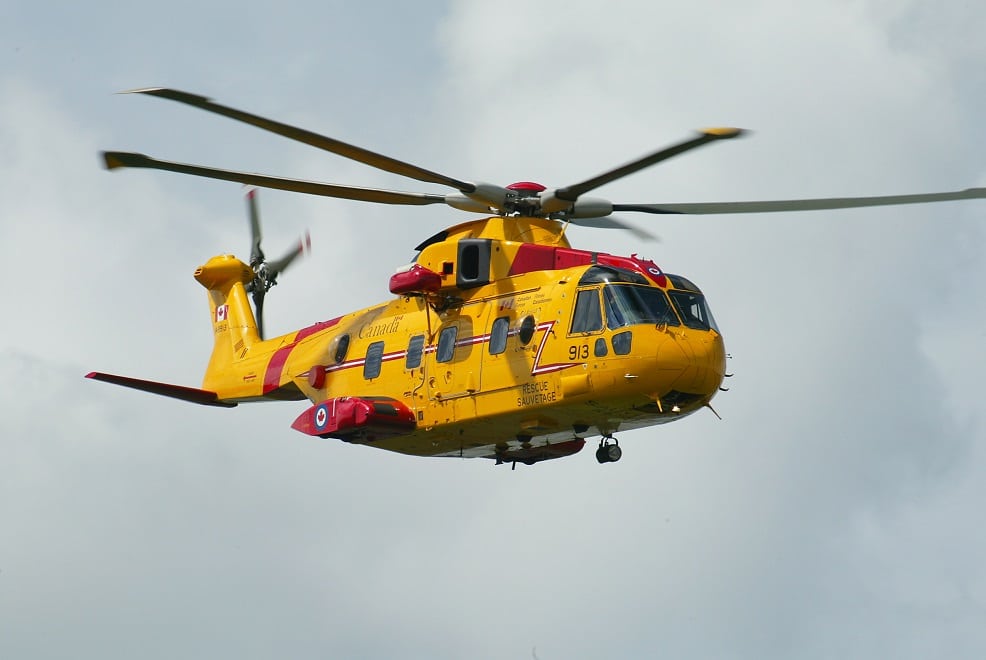Aerospace
Leonardo lands major helicopter deal with Canadian government

The Canadian Department of National Defence has given Leonardo (through Leonardo U.K. Ltd. of Yeovil) a $1 billion CAN (€690 million) contract for the AW101/CH-149 “Cormorant” Mid-Life Upgrade (CMLU) Project. This contract covers 16 aircraft, including 13 Cormorant Search and Rescue Helicopters (CSH) that are currently in service and the addition of three more aircraft.
Japan Airlines Set To Fly Airbus A321P2F In Spring 2024(Opens in a new browser tab)
By virtue of this agreement, the fleet’s life expectancy will be extended until 2042+, its systems and technologies will be improved, compliance with new airspace rules will be ensured, and Cormorant helicopters will be able to return to the Main Operating Base (MOB) Trenton.
In accordance with the suggestion made by Team Cormorant, the fleet of CH-149 Cormorants will now undergo a mid-life upgrade. The group is an alliance between Leonardo and is supported by its principal Canadian subcontractor IMP Aerospace and Defence, GE Canada, and Collins Aerospace Canada. The majority of the CMLU work will be done in Canada, principally at IMP’s Halifax, N.S. facilities.
The CMLU Project will transition Canada’s AW101/CH-149 “Cormorant” SAR helicopter fleet to the latest standard currently being delivered for SAR in Norway and arguably the best search and rescue helicopter in the world. The CMLU Project will include; state-of-the-art avionics, a new glass cockpit, more powerful digitally-controlled engines, wireless in-cabin communications, the latest SAR sensors including Electro Optical Infra-Red device and Mobile Phone Detection Location System –enabling less search and more rescue.

Aerospace
Boeing Transfers Rocket Stage to NASA, Paving Way for Human Moon Mission

Boeing has achieved a significant milestone by providing NASA with the second core stage of the Space Launch System (SLS) rocket.
This crucial component, crafted at NASA’s Michoud Assembly Facility (MAF), is set to propel the Artemis II crew into lunar orbit, marking humanity’s return to deep space after a 50-year hiatus.
The monumental Boeing-built rocket stage, the largest element of the Artemis II mission, will embark on a journey aboard the Pegasus barge, traveling 900 miles to NASA’s Kennedy Space Center.
Comparison of two legendary aircraft B777x vs B747 aircraft:Click here
Upon arrival, it will be meticulously integrated with other essential Artemis II components, including the upper stage, solid rocket boosters, and NASA’s Orion spacecraft within the iconic Vehicle Assembly Building. This intricate integration process is a vital step toward the eagerly anticipated Artemis II launch, slated for 2025.
“Boeing-built products helped land humankind on the moon in 1969, and we’re proud to continue that legacy through the Artemis generation,” remarked Dave Dutcher, vice president and program manager for Boeing’s SLS program. “Together, with NASA and our industry partners and suppliers, we are building the world’s most capable rocket and paving the way to deep space through America’s rocket factory in New Orleans.”
NASA, Lockheed Martin Reveal X-59 Quiet Supersonic Aircraft:Click here
The delivery of Core Stage 2 marks a significant achievement in the evolution of the SLS rocket. Towering over 200 feet and powered by four RS-25 engines, this core stage, coupled with two solid-fueled booster rockets, will generate a staggering 8.8 million pounds of thrust. This immense power is crucial to launching Artemis II and future missions into the vast expanse of space.
The SLS rocket stands unparalleled in its capability to transport both crew and substantial cargo to the moon and beyond in a single launch. Its extraordinary capacity will facilitate the delivery of human-rated spacecraft, habitats, and scientific missions to destinations including the moon and Mars, ushering in a new era of space exploration.
-

 Travel1 week ago
Travel1 week agoAir India to Expand US Operations with Three New Routes After a Decade
-

 Travel2 weeks ago
Travel2 weeks agoWhy We Should Avoid These Stamps in a Passport
-

 Airlines1 month ago
Airlines1 month agoInvestigations Reveal Fake Chinese Titanium in Boeing and Airbus Jets
-

 Tech4 weeks ago
Tech4 weeks agoChina’s CATL Plans 1,800-Mile Electric Plane Launch by 2027
-

 Airport3 days ago
Airport3 days agoTop 10 Largest Airports in the World by Size
-

 Aerospace4 weeks ago
Aerospace4 weeks agoChina’s Fighter Jets Turn Wings into Autonomous Drones
-

 Airlines4 days ago
Airlines4 days agoAir India Rolls Out A350s for Delhi-New York JFK and Newark Routes
-

 Defence3 weeks ago
Defence3 weeks agoBoeing Enhances Chinook with New Engines and Block II Upgrades at $96 Million







